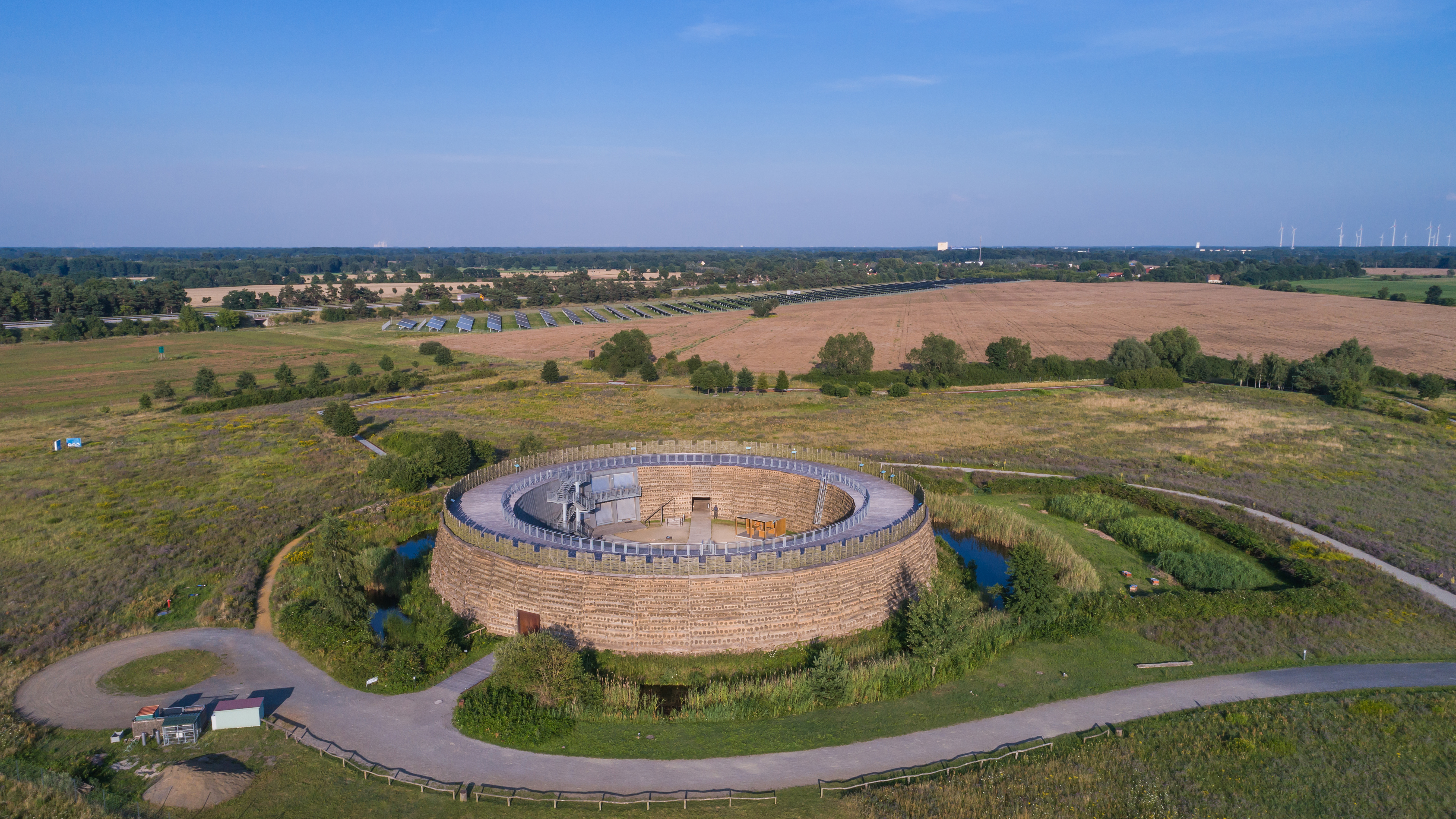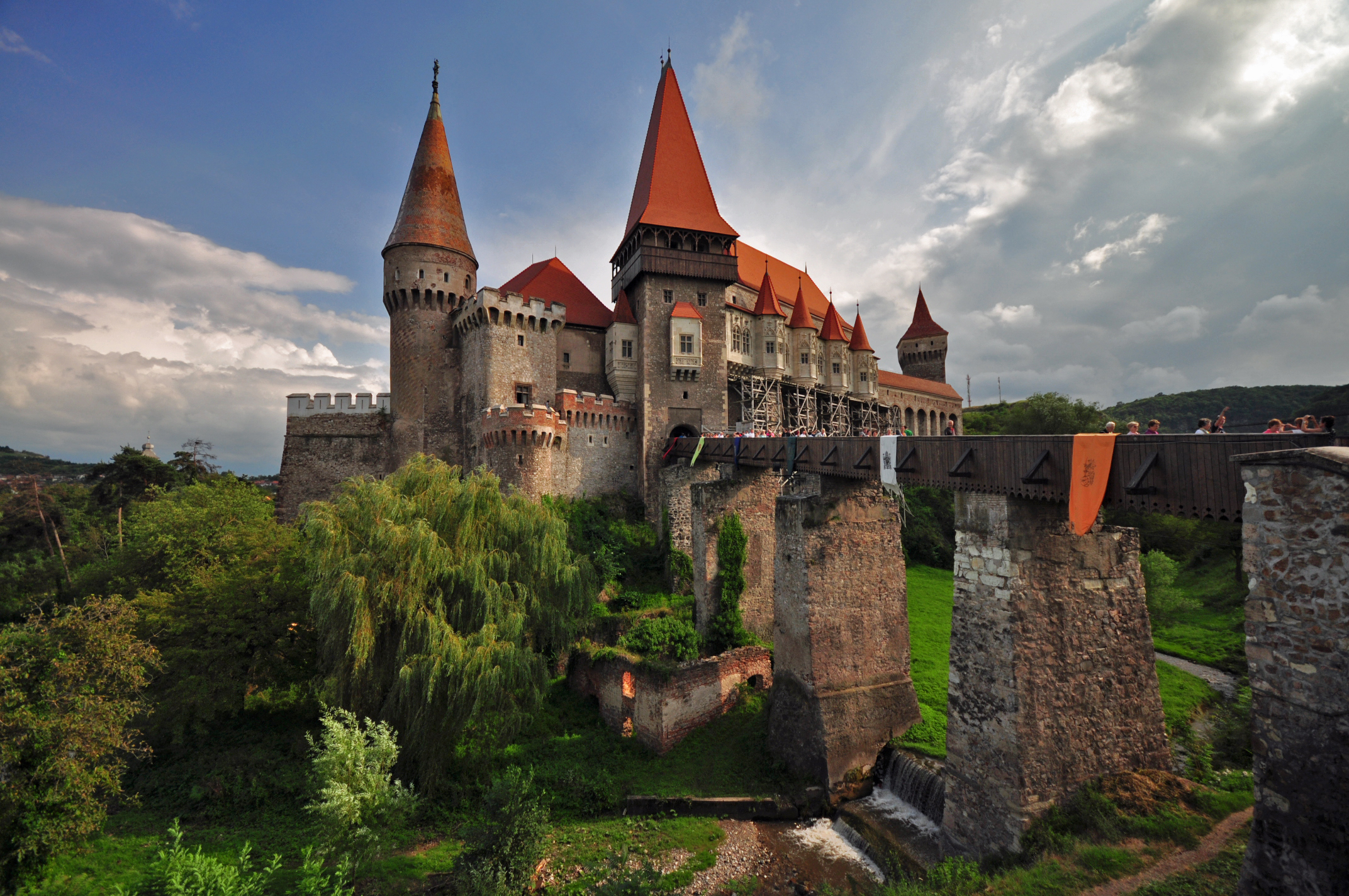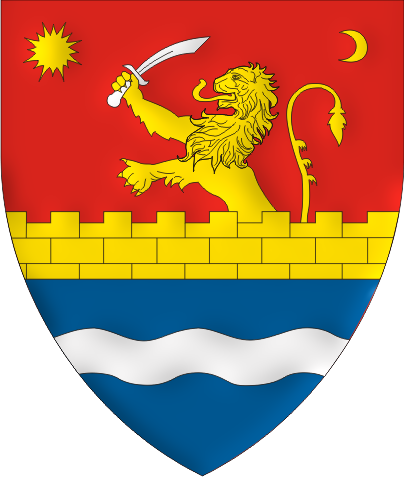|
Câlnic, Alba
Câlnic (; Hungarian language, Hungarian/Turkish language, Turkish: ''Kelnek'') is a commune in Alba County, Transylvania, Romania, composed of two villages, Câlnic and Deal (''Dál''). Câlnic village is known for Câlnic Citadel, its castle, which is on UNESCO's list of World Heritage Sites. The castle Câlnic Castle, first mentioned in 1269, is very well preserved. Built as a fortified mansion, defensible residence for the local Saxon "Gref" or count, it was bought in 1430 by the likewise Saxon village community and further fortified as a refuge castle or ''Fliehburg''. It consists of a large court surrounded by walls and some buildings adjacent to the walls. In the middle of the court there is a large keep as well as a chapel. The castle differs from most other constructions of this type in that it is not situated on a hilltop but rather in a depression, much lower than the surrounding hills. This position, clearly inconvenient in case of a siege, can be explained by the castl ... [...More Info...] [...Related Items...] OR: [Wikipedia] [Google] [Baidu] |
Câlnic Citadel
Câlnic or Calnic may refer to several places in Romania: * Câlnic, Alba, a commune in Alba County * Câlnic, Gorj, a commune in Gorj County * Câlnic, a district in the city of Reșița, Caraș-Severin County * Calnic, a village in Valea Crișului Commune, Covasna County * Câlnic (Secaș), a river in Alba County * Câlnic (Gilort), a river in Gorj County * Câlnic, a tributary of the Tismana (river), Tismana in Gorj County {{geodis ... [...More Info...] [...Related Items...] OR: [Wikipedia] [Google] [Baidu] |
Refuge Castle
A refuge castleCreighton, Oliver (2015). ''Early European Castles''. Bloomsbury. or refuge fort (, also ''Fluchtburg'', ''Volksburg'', ''Bauernburg'' or ''Vryburg'') is a castle-like defensive location, usually surrounded by Rampart (fortification), ramparts, that is not permanently occupied but acts as a temporary retreat for the local population when threatened by war or attack. In former times such sites were also described as giant castles (German: ''Hünenburgen'') because their origin was ascribed to Giant (mythology), giants. History In Europe a multitude of large protohistoric sites surrounded by earthworks has been uncovered by archaeological excavations, many over 100 metres in diameter, that are understood to be refuge castles. Amongst ancient historical references to them are the refuge castles of the Gauls described by Julius Caesar, Caesar as ''oppida'', although they could also be permanent settlements. Similar ringwork (''Ringwall'') systems were built by th ... [...More Info...] [...Related Items...] OR: [Wikipedia] [Google] [Baidu] |
Communes In Alba County
A commune is an alternative term for an intentional community. Commune or comună or comune or other derivations may also refer to: Administrative-territorial entities * Commune (administrative division), a municipality or township ** Communes of Algeria ** Communes of Angola ** Communes of Belgium ** Communes of Benin ** Communes of Burundi ** Communes of Chile ** Communes of the Democratic Republic of the Congo ** Communes of France ** Communes of Italy, called ''comune'' ** Communes of Luxembourg ** Communes of Moldova, called ''comună'' ** Communes of Niger ** Communes of Romania, called ''comună'' ** Communes of Switzerland ** Commune-level subdivisions (Vietnam) *** Commune (Vietnam) *** Commune-level town (Vietnam) ** People's commune, highest of three administrative levels in rural China, 1958 to 1983 Government and military/defense * Agricultural commune, intentional community based on agricultural labor * Commune (rebellion), a synonym for uprising or revolutionary ... [...More Info...] [...Related Items...] OR: [Wikipedia] [Google] [Baidu] |
Villages With Fortified Churches In Transylvania
The Transylvania region of Romania has one of the highest concentrations of existing fortified churches from the 13th to 16th centuries. It has more than 150 well preserved fortified churches of a great variety of architectural styles (out of an original 300 fortified churches). Listed as a UNESCO World Heritage Site, Villages with Fortified Churches in Transylvania are seven villages (six Transylvanian Saxons, Saxon and one Székelys, Székely) founded by the Transylvanian Saxons. They are dominated by fortified churches and characterized by a specific settlement pattern that has been preserved since the Late Middle Ages.Villages with Fortified Churches in Transylvania. UNESCO World Heritage Centre 1992-2010 The list The seven villages listed as a UNESCO World Heritage Site: ...
|
Tourism In Romania
In December 2024, Romania's tourism sector had a 6.8% increase in arrivals at accommodation facilities, including hotels, apartments, and renting, rental rooms, compared to December 2023. in authorized lodging facilities, marking increases of 4.5% over 2023 Overnight stays also rose by 4.9% during the same period. At border crossing points, Romania recorded 916,100 foreign visitor arrivals, while the number of Romanian residents traveling abroad reached 1,007,600. In 2024, the National Institute of Statistics (Romania), National Institute of Statistics reported that Romania recorded over 14 million arrivals in authorized lodging facilities, marking increases of 4.5% over 2023 and 7.7% compared to 2019, with overnight stays reaching 30.2 million. Early trends for 2025 continue to reflect strong domestic interest, particularly along the Romanian Black Sea resorts and in emerging sectors such as Ecotourism. The most visited cities are Bucharest, Constanța, Brașov, Timișoara, ... [...More Info...] [...Related Items...] OR: [Wikipedia] [Google] [Baidu] |
List Of Castles In Romania
This is a list of castles and fortresses declared monument istoric, historic monuments by Romania's Ministry of Culture (Romania), Ministry of Culture. Banat ; Caraș-Severin County, Caraș-Severin (6) * Bey's Fortress, Socolari * Caransebeș Fortress, Caransebeș * Cuiești Fortress, Bocșa * Ladislau Fortress, Coronini * Mehadia Fortress, Mehadia * Turk's Fortress (''Turski Grad''), Carașova ; Timiș County, Timiș (10) * Ciacova Fortress, Ciacova * Făget Fortress, Făget * Huniade Castle, Timișoara * Jdioara Fortress, Criciova, Jdioara * Karátsonyi Castle, Banloc * Margina Fortress, Margina * Castle of Count de Mercy, Sânandrei, Carani * Morisena Fortress, Cenad * Nákó Castle, Sânnicolau Mare * Timișoara Fortress, Timișoara Bukovina ; Suceava County, Suceava (3) * Șcheia Fortress, Suceava * Princely Fortress, Suceava * Seat Fortress of Suceava, Suceava Crișana ; Arad County, Arad (22) * Agrișu Mare Fortress, Târnova, Arad, Agrișu Mare * Fortress ... [...More Info...] [...Related Items...] OR: [Wikipedia] [Google] [Baidu] |
Siege
A siege () . is a military blockade of a city, or fortress, with the intent of conquering by attrition, or by well-prepared assault. Siege warfare (also called siegecrafts or poliorcetics) is a form of constant, low-intensity conflict characterized by one party holding a strong, static, defensive position. Consequently, an opportunity for negotiation between combatants is common, as proximity and fluctuating advantage can encourage diplomacy. A siege occurs when an attacker encounters a city or fortress that cannot be easily taken by a quick assault, and which refuses to surrender. Sieges involve surrounding the target to block provision of supplies and reinforcement or escape of troops (a tactic known as "investment"). This is typically coupled with attempts to reduce the fortifications by means of siege engines, artillery bombardment, mining (also known as sapping), or the use of deception or treachery to bypass defenses. Failing a military outcome, sieges can often be ... [...More Info...] [...Related Items...] OR: [Wikipedia] [Google] [Baidu] |
Keep
A keep is a type of fortified tower built within castles during the Middle Ages by European nobility. Scholars have debated the scope of the word ''keep'', but usually consider it to refer to large towers in castles that were fortified residences, used as a refuge of last resort should the rest of the castle fall to an adversary. The first keeps were made of timber and formed a key part of the motte-and-bailey castles that emerged in Normandy and Anjou during the 10th century; the design spread to England, Portugal, south Italy and Sicily. As a result of the Norman Conquest of England in 1066, use spread into Wales during the second half of the 11th century and into Ireland in the 1170s. The Anglo-Normans and French rulers began to build stone keeps during the 10th and 11th centuries, including Norman keeps, with a square or rectangular design, and circular shell keeps. Stone keeps carried considerable political as well as military importance and could take a decade or more t ... [...More Info...] [...Related Items...] OR: [Wikipedia] [Google] [Baidu] |
Fortified Mansion
A fortified house or fortified mansion is a type of building which developed in Europe during the Middle Ages, generally with significant fortifications added. During the earlier Roman period it was common for wealthy landowners to construct unfortified villas on their lands. After the fall of Rome, increased social instability and military conflict necessitated more austere, defensible types of structures. United States In the United States, historically a fortified house was often called a fort or station depending on the region. This was a building built for defense against primarily Indian attacks in frontier areas. While some fortified houses were sometimes used by militias, state and federal military units, their primary purpose was for private or civilian defense. Sometimes a stockade would surround the building(s). Examples of historic private or civilian fortified houses built include; * Fort Nelson and Floyd's Station and Low Dutch Station all in Kentucky. * M ... [...More Info...] [...Related Items...] OR: [Wikipedia] [Google] [Baidu] |
Hungarian Language
Hungarian, or Magyar (, ), is an Ugric language of the Uralic language family spoken in Hungary and parts of several neighboring countries. It is the official language of Hungary and one of the 24 official languages of the European Union. Outside Hungary, it is also spoken by Hungarians, Hungarian communities in southern Slovakia, western Ukraine (Zakarpattia Oblast, Transcarpathia), central and western Romania (Transylvania), northern Serbia (Vojvodina), northern Croatia, northeastern Slovenia (Prekmurje), and eastern Austria (Burgenland). It is also spoken by Hungarian diaspora communities worldwide, especially in North America (particularly the Hungarian Americans, United States and Canada) and Israel. With 14 million speakers, it is the Uralic family's most widely spoken language. Classification Hungarian is a member of the Uralic language family. Linguistic connections between Hungarian and other Uralic languages were noticed in the 1670s, and the family's existenc ... [...More Info...] [...Related Items...] OR: [Wikipedia] [Google] [Baidu] |
Câlnic Castle
Câlnic or Calnic may refer to several places in Romania: * Câlnic, Alba, a commune in Alba County * Câlnic, Gorj, a commune in Gorj County * Câlnic, a district in the city of Reșița, Caraș-Severin County * Calnic, a village in Valea Crișului Commune, Covasna County * Câlnic (Secaș), a river in Alba County * Câlnic (Gilort) The Câlnic is a left tributary of the river Gilort in Romania Romania is a country located at the crossroads of Central Europe, Central, Eastern Europe, Eastern and Southeast Europe. It borders Ukraine to the north and east, Hungary to the ..., a river in Gorj County * Câlnic, a tributary of the Tismana in Gorj County {{geodis ... [...More Info...] [...Related Items...] OR: [Wikipedia] [Google] [Baidu] |
World Heritage Site
World Heritage Sites are landmarks and areas with legal protection under an treaty, international treaty administered by UNESCO for having cultural, historical, or scientific significance. The sites are judged to contain "cultural and natural heritage around the world considered to be of outstanding value to humanity". To be selected, a World Heritage Site is nominated by its host country and determined by the UNESCO's World Heritage Committee to be a unique landmark which is geographically and historically identifiable, having a special cultural or physical significance, and to be under a sufficient system of legal protection. World Heritage Sites might be ancient ruins or historical structures, buildings, cities, deserts, forests, islands, lakes, monuments, mountains or wilderness areas, and others. A World Heritage Site may signify a remarkable accomplishment of humankind and serve as evidence of humanity's intellectual history on the planet, or it might be a place of grea ... [...More Info...] [...Related Items...] OR: [Wikipedia] [Google] [Baidu] |







